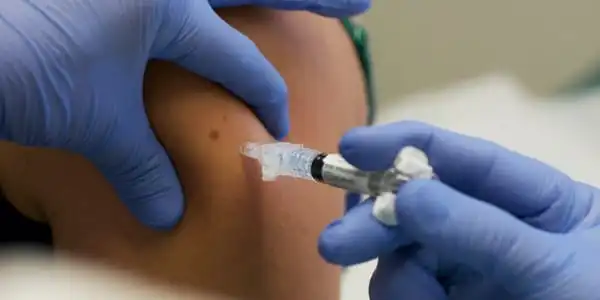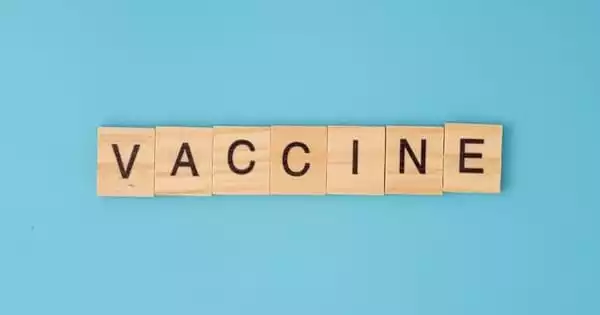According to Arup Indra, professor of pharmaceutical sciences at OSU and the study’s leader, ultraviolet radiation from the sun causes oxidative stress, which increases the risk of skin malignancies such as melanoma. According to research from Oregon State University’s College of Pharmacy, a vaccine that stimulates the production of a protein crucial to the skin’s antioxidant network could help people boost their defenses against skin cancer.
He believes that a messenger RNA vaccine, similar to the Moderna and Pfizer COVID-19 vaccines, that promotes the creation of the protein TR1 in skin cells could reduce the incidence of UV-induced malignancies and other skin diseases. The study’s findings, in which Arup and colleagues employed a mouse model to investigate TR1’s role in skin cell health and stability, were published in the Journal of Investigative Dermatology.
According to the Centers for Disease Control and Prevention, skin cancer is the most frequent cancer in the United States. Melanoma, the worst form of skin cancer, is caused by the formation of malignant cells in skin cells known as melanocytes; melanocytes create the pigment melanin, which determines skin color.
For more than 40 years, researchers have looked at dietary antioxidants as a possible source of inexpensive, low-risk agents for cancer prevention, but they have not always performed well in clinical trials and in some cases have actually been harmful, necessitating the need to intervene with new chemoprevention agents such as an mRNA vaccine.
Professor Arup Indra
According to the CDC, UV radiation exposure is responsible for the majority of skin cancer incidents. People become tanned as a result of sun exposure or tanning beds because the body produces melanin to protect the skin from burning.
“Despite attempts to raise public knowledge about the warning signals of melanoma and the consequences of excessive UV radiation exposure,” Indra said, “the prevalence of melanoma continues to climb. For more than 40 years, researchers have looked at dietary antioxidants as a possible source of inexpensive, low-risk agents for cancer prevention, but they have not always performed well in clinical trials and in some cases have actually been harmful, necessitating the need to intervene with new chemoprevention agents such as an mRNA vaccine.”
TR1 is an abbreviation for thioredoxin reductase 1. Reductase is an enzyme that promotes a reduction process in which a chemical species gets electrons, typically as part of a “redox” reaction in which another species oxidizes, or loses electrons.

TR1 is an important component of the antioxidant system in melanocytes. Antioxidants guard against reactive oxygen species, or ROS, which are on the lookout for electrons from molecules in cells and can cause DNA damage.
Melanocytes are under ROS attack not only from the sun, but also from the pigment-making process, melanogenesis, which produces ROS. Antioxidants prevent oxidation by facilitating the transfer of electrons, which acts as an off switch for what would otherwise be a chain reaction affecting many molecules in melanocytes and other cells.
Messenger RNA vaccines function by telling cells to produce a certain protein. In the case of coronavirus vaccinations, it’s a harmless component of the virus’ spike protein that elicits an immune response; in the case of the proposed melanoma vaccine, it’s TR1.
“Following the uptake of the mRNA into the cell and the activation of the cell’s machinery, the cell should be at a high antioxidant level and capable of dealing with oxidative stress and DNA damage caused by ultraviolet light,” Indra explained. “People at high risk of skin cancer, such as those who work outside in hot weather, should preferably be vaccinated once a year.”
Researchers detected higher oxidative stress and DNA damage in the absence of TR1 despite the presence of other antioxidant proteins, suggesting that a TR1 vaccination alone may be sufficient. Other antioxidants, such as glutathione peroxidase and superoxide dismutase, may also be beneficial, according to Indra.
“Everything must be evaluated and proven in preclinical models,” he explained. “We need to create an mRNA vaccine, distribute it locally or systematically, and then track how it affects the body’s defenses. We are clearly at the tip of the iceberg, but the possibilities for avoiding various sorts of disease development, including cancer, by modifying the body’s antioxidant system are exciting.”
Gitali Ganguli-Indra, Evan Carpenter, Mark Wyant, Aaryan Indra, and Gary Merrill from Ohio State University were also participated in the study, which was funded by the National Institutes of Health and the College of Pharmacy. Researchers from Oregon Health & Science University, the University of Utah, and Fujita Health University in Japan also took part.















